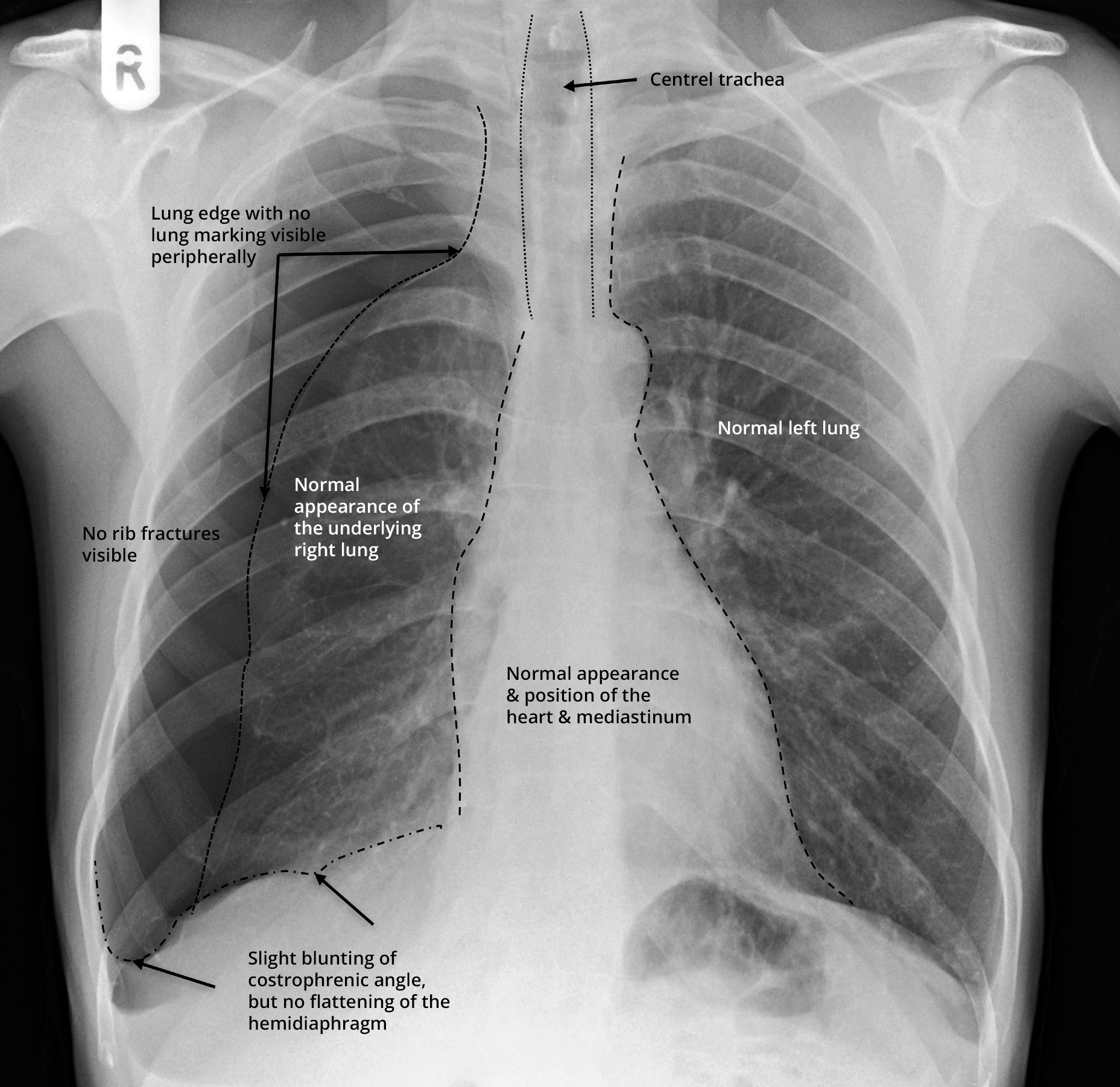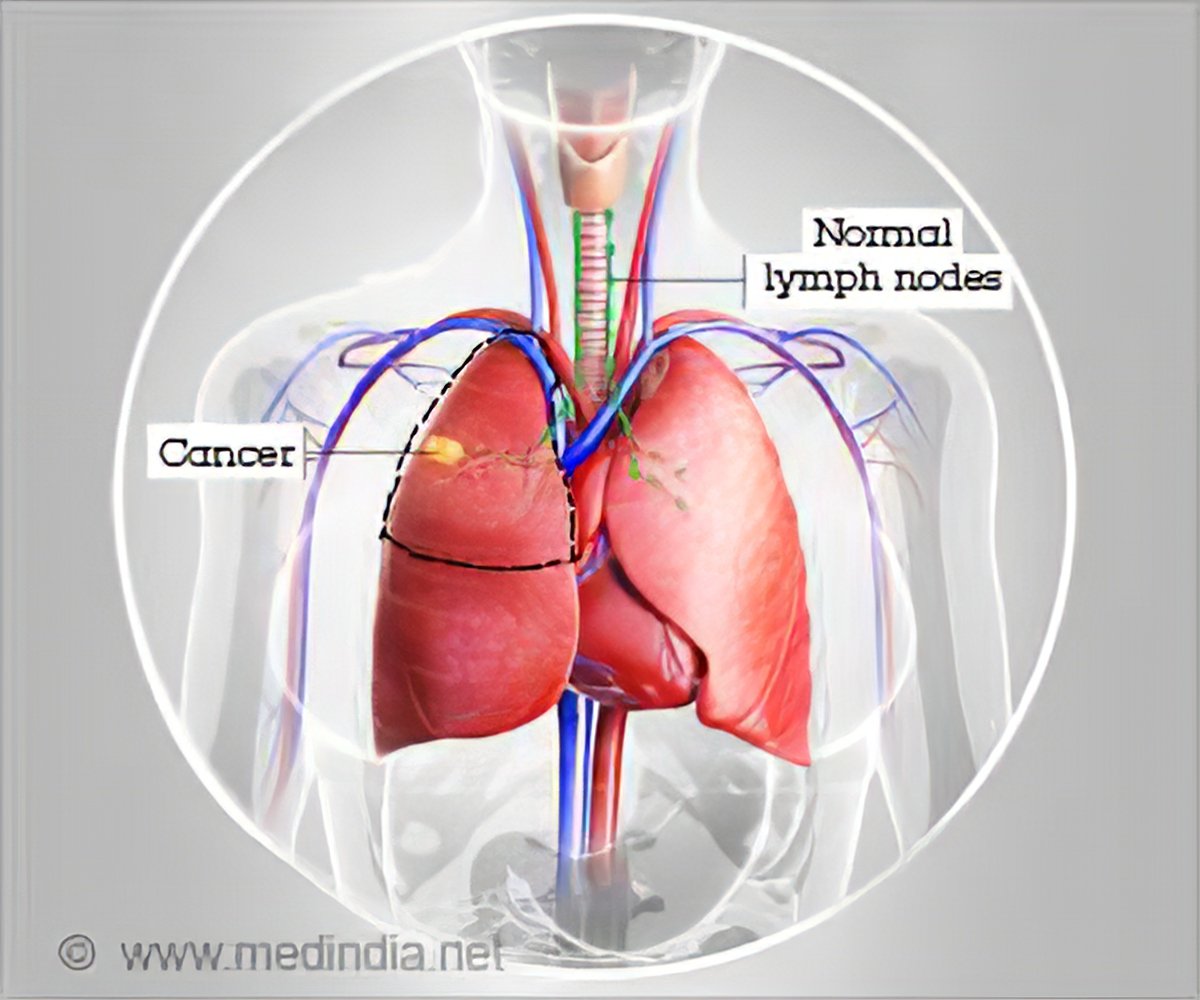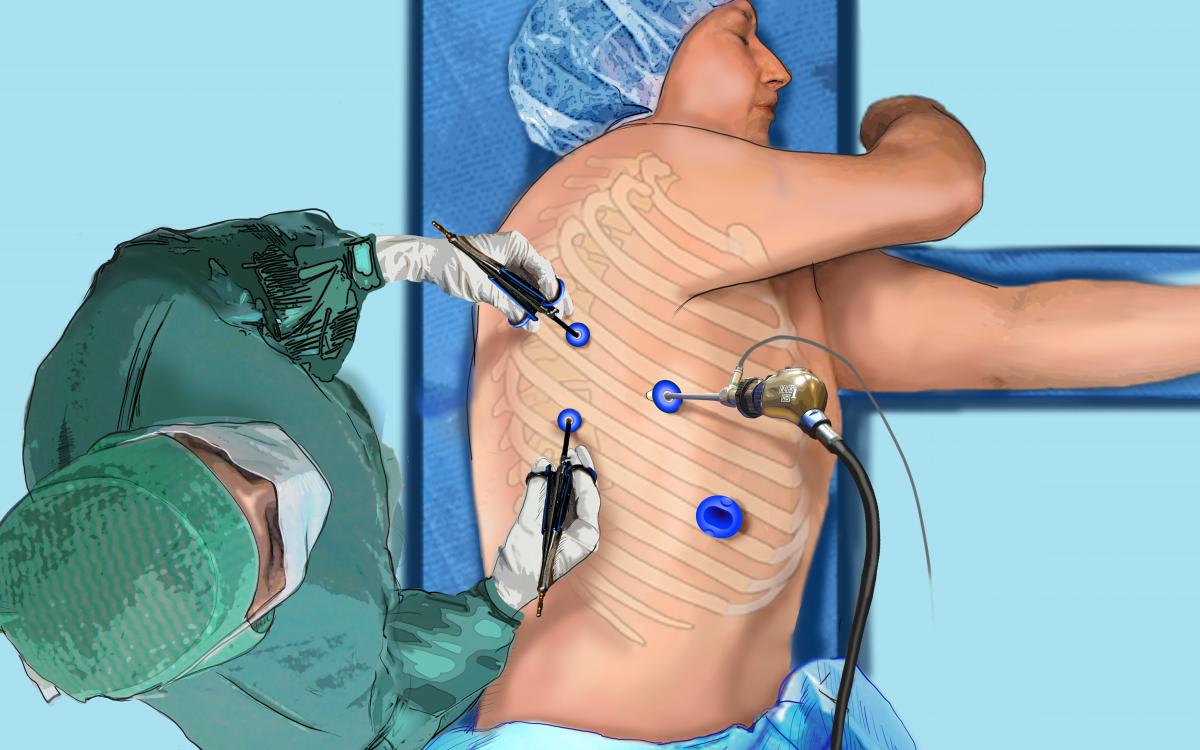R Lobectomy
A lobectomy is the surgical removal of a lobe of an organ. It most often refers to the removal of a section of the lung, but it can also refer the liver, brain, thyroid gland, or other organs. Function effects of lobectomy in adults are rela-tively few and there are no reports of detailed mechanical lung function before and after lobec-tomy. Weperformed comprehensive lungfunction tests before and after lobectomy in 16 patients with varying degrees of airflow obstruction in order to documentthe changes in lung function. A lobectomy is most often done during a surgery called a thoracotomy. During this type of surgery, the chest is opened. In most cases, during a lobectomy the cut (incision) is made at the level of the affected lobe. The cut is most often made on the front of the chest under the nipple and wraps around the back under the shoulder blade.
Lobectomy has been the standard of care for patients with stage I primary non-small cell lung cancer (NSCLC). Historically, this is based on the results of the Lung Cancer Study Group (LCSG) trial reported by Ginsberg and Rubinstein. Video-assisted versus open thoracotomy lobectomy: comparison on lymphadenectomy and survival in early stage of lung cancer Dariusz A. Dziedzic 1^, Marcin Zbytniewski 1^, Grzegorz M. Gryszko 1^, Marcin M. Cackowski 1^, Renata Langfort 2, Tadeusz M.
What is a lobectomy?

A lobectomy is a surgery to remove one of the lobes of the lungs. The lungshave sections called lobes. The right lung has 3 lobes. The left lung has 2lobes. A lobectomy may be done when a problem is found in just part of alung. The affected lobe is removed, and the remaining healthy lung tissuecan work as normal.
A lobectomy is most often done during a surgery called a thoracotomy.During this type of surgery, the chest is opened.
In most cases, during a lobectomy the cut (incision) is made at the levelof the affected lobe. The cut is most often made on the front of the chestunder the nipple and wraps around the back under the shoulder blade. Thesurgeon gets access to the chest cavity through the exposed ribs to removethe lobe.
In some cases, a video-assisted thoracoscopic surgery (VATS) is used to doa lobectomy. This is a less-invasive procedure. With this type of surgery,3 or 4 small cuts are used instead of 1 large cut. Tiny tools are put intothe chest cavity. One of the tools is called a thoracoscope. It’s a tubewith a light and a tiny camera that sends images to a computer screen. Thisshows the internal organs on the screen. The small tools are used throughthe other cuts to do the surgery.
Why might I need a lobectomy?
A lobectomy may be done when a problem is found in 1 lobe. A lobe may beremoved so that disease isn't spread to the other lobes. This may be thecase with tuberculosis or certain types of lung cancer.
Chest and lung health conditions that may be treated with lobectomyinclude:
Tuberculosis (TB). This is an ongoing (chronic) bacterial infection that often infects the lungs.
Lung abscess. This is an area of pus that may form in the lung. If the abscess does not go away with antibiotic medicine, it may need to be removed.
Emphysema. This is a chronic illness caused by the breakdown of the elastic fibers in the lungs. This makes it harder for the lungs to move when you breathe.
Benign tumor. This is a growth that is not cancer. It can press on large blood vessels and affect the function of other organs.
Lung cancer. This is a type of cancer that may affect the main airways to the lungs (the bronchi), one or more lobes of the lungs, the pleural lining, or other lung tissue. If not treated, it can spread to other parts of the body.
Fungal infection. Fungi can grow in the body and cause infections.
Your healthcare provider may have other reasons to advise a lobectomy.
What are the risks of a lobectomy?
All procedures have some risks. The risks of this procedure may include:
Infection
Air in the space between the lung covering (pleural space) that causes the lung to collapse (pneumothorax)
Bleeding
A tube-like opening between the airway (bronchus) and pleural space that causes air or fluid to leak into the chest (bronchopleural fistula)
An area of pus in the chest cavity (empyema)
Fluid in the space between the lung and inner chest wall (pleural effusion)
Your risks may vary depending on your general health and other factors. Askyour healthcare provider which risks apply most to you. Talk with him orher about any concerns you have.
How do I get ready for a lobectomy?
Your healthcare provider will explain the procedure to you. Ask him or herany questions you have. Think about bringing a family member or friend totake notes and make sure all your questions are answered. You may be askedto sign a consent form that gives permission to do the procedure. Read theform carefully. Before you sign, ask questions if anything is not clear.
Tell your healthcare provider if you:
Are pregnant or think you may be pregnant
Are allergic to contrast dye or iodine
Are sensitive to or allergic to any medicines, latex, tape, or anesthetic medicines (local and general)
Take any medicines, including prescription or over-the-counter medicines, vitamins, herbs, and supplements
Have had a bleeding disorder
Take blood-thinning medicine (anticoagulant), aspirin, or other medicines that affect blood clotting

Also:


Stop taking certain medicines before the procedure, if instructed by your healthcare provider
Follow any directions you are given for not eating or drinking before the procedure
Stop smoking
Plan to have someone drive you home from the hospital
Follow any other instructions your healthcare provider gives you
You may have blood tests or other tests or exams before the procedure. Yourhealthcare provider will tell you more.
What happens during a lobectomy?
The procedure almost always needs an inpatient stay. This means that it maybe done as part of a longer stay in the hospital. The way the procedure isdone may vary. It depends on your condition and your healthcare provider'smethods. In most cases, the procedure will follow this process:
You will be asked to remove your clothes. You will be given a hospital gown to wear. You may be asked to remove jewelry or other objects.
You will lie down on an operating table.
An IV (intravenous) line will be put into your arm or hand.
You may be given antibiotics before and after the procedure.
You will be given general anesthesia. This is medicine that prevents pain and lets you sleep through the procedure.
A breathing tube will be put into your throat and hooked up to a breathing machine (ventilator). Your heart rate, blood pressure, and breathing will be watched during the procedure.
A soft, flexible tube (catheter) may be put into your bladder. This is to drain urine during the procedure.
Hair in the area of surgery may be trimmed. The skin in the area will be cleaned with an antiseptic solution.
A cut (incision) will be made on the front of your chest at the level of the lobe to be removed. The cut will go under your arm around to your back.
When the ribs can be seen, a special tool will be used to spread them apart. The lung lobe will be removed.
One or more tubes may be put into your chest. These are to help remove air and fluid after surgery.
The cut will be closed with stitches (sutures) or staples. A bandage or dressing will be put on the area.
A thin tube (epidural catheter) may be put in the area of the lower spine. This is done to send pain medicine into your back. It may be done in the operating room or in the recovery room.
Lung Capacity After Lobectomy
What happens after a lobectomy?
After the procedure, you will spend some time in a recovery room. You maybe sleepy and confused when you wake up from general anesthesia orsedation. Your healthcare team will watch your vital signs, such as yourheart rate and breathing. You’ll be given pain medicine if you need it. Achest X-ray may be done right after the surgery. This is to make sure yourlungs are OK. You will stay in the hospital for several days.
You may have one or more chest tubes near the cut (incision) to drain airor fluid from the chest. The chest tubes may cause pain when you move,cough, or breathe deeply. They will be taken out before you leave thehospital.
You will be taught deep-breathing exercises and coughing methods to helpyour lungs re-expand after surgery. This is to help breathing and preventpneumonia. You may need oxygen for a period of time after surgery. In mostcases, the oxygen will be stopped before you go home. Or you may need to gohome with oxygen.
You will be told to move around as much as you can while in bed, and getout of bed and walk as soon as you can. This will help your lungs healfaster.

You may be given fluids to drink a few hours after surgery. You will begiven food to eat as you are able.
Before you leave the hospital, you’ll make an appointment for a follow-upvisit with your healthcare provider. You will go home when your healthcareprovider says it’s OK. Someone will need to drive you home.
At home, keep the cut clean and dry. Your healthcare provider will give youbathing instructions. The stitches or staples will be removed during afollow-up appointment. The cut may be sore for a few days. Your chest andshoulder muscles may ache, especially with deep breathing, coughing, andactivity. You can take pain medicine as advised by your healthcareprovider. Aspirin and some other pain medicines may increase bleeding. Makesure to take only the medicines your healthcare provider advises.
Keep doing the breathing exercises you learned in the hospital. Slowlyincrease your physical activity as you can handle it. It may take a fewweeks to return to normal. You may need to not lift any heavy items for afew months. This is to prevent strain on your chest muscles and the cut.
While you’re healing, take steps to prevent exposure to:
Upper respiratory infections, such as colds and flu
Tobacco smoke
Chemical fumes
Environmental pollution
Call your healthcare provider if you have any of the below:
Fever of 100.4°F (38°C) or higher, or as advised by your provider
Redness or swelling of the incision
Blood or other fluid leaking from the incision
Pain around the incision that gets worse
Feeling short of breath
Trouble breathing
Pain with breathing
Chest pain
Cough
Confusion or other change in mental state
Green, yellow, or blood-tinted sputum (phlegm)
Your healthcare provider may give you other instructions after theprocedure.
Next steps
R Upper Lobectomy
Before you agree to the test or the procedure make sure you know:
R Thyroid Lobectomy
The name of the test or procedure
The reason you are having the test or procedure
What results to expect and what they mean
The risks and benefits of the test or procedure
What the possible side effects or complications are
When and where you are to have the test or procedure
Who will do the test or procedure and what that person’s qualifications are
What would happen if you did not have the test or procedure
Any alternative tests or procedures to think about
When and how will you get the results
Who to call after the test or procedure if you have questions or problems
How much will you have to pay for the test or procedure